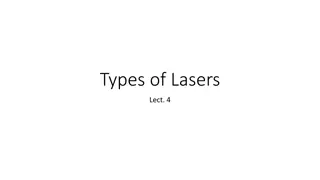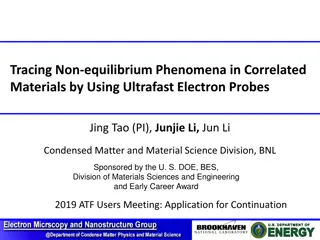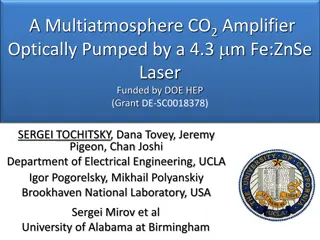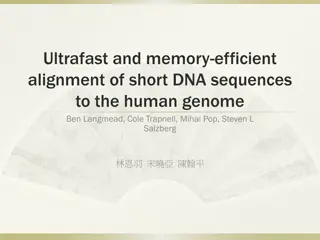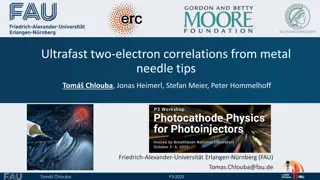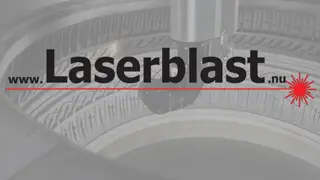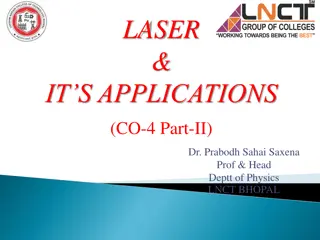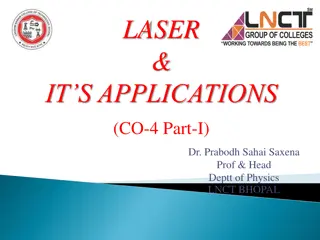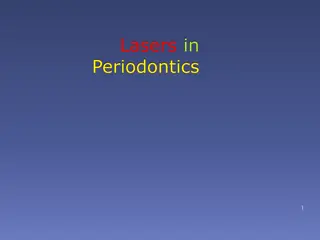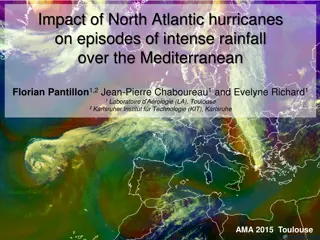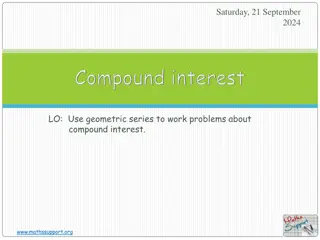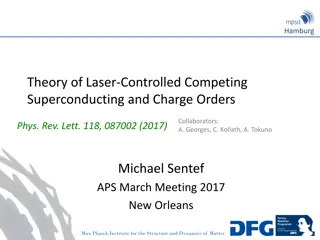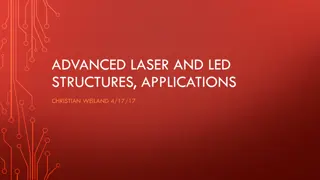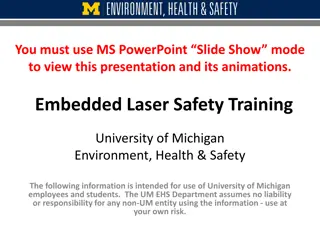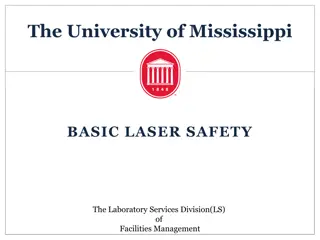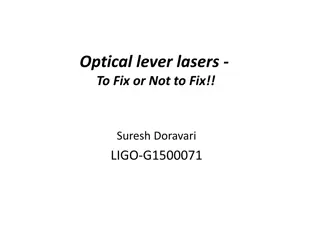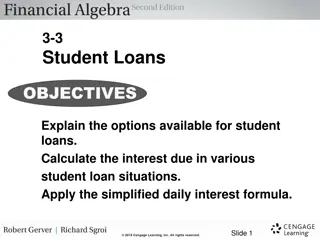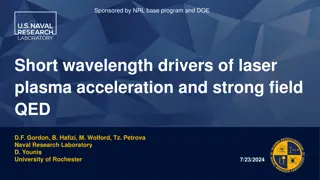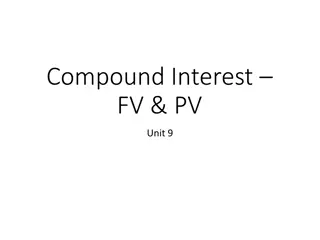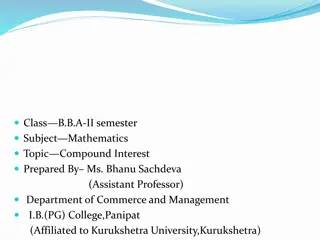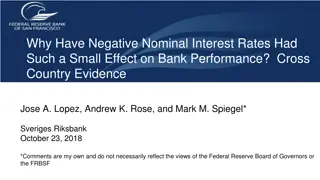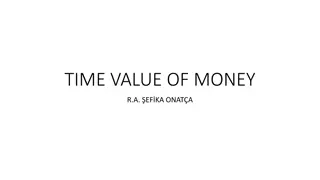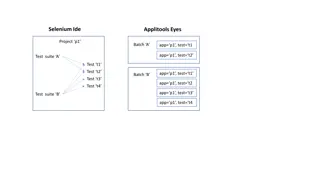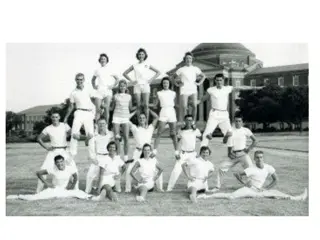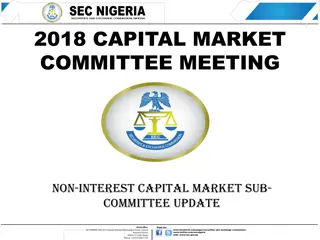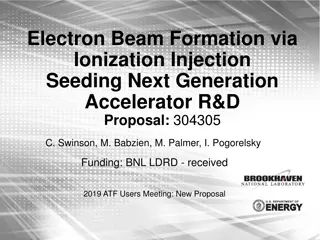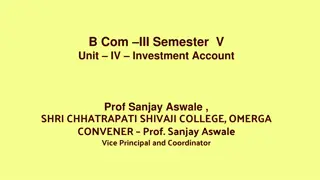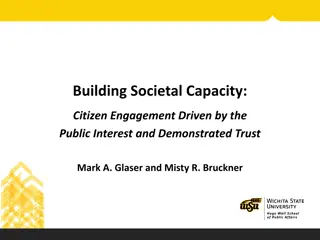NNSA's Interest in Intense and Ultrafast Lasers
The National Nuclear Security Administration (NNSA) focuses on high intensity lasers for maintaining nuclear weapons design capabilities and stockpile stewardship. Key elements include enhancing shot rate on existing facilities and constructing new ones for simulations. NNSA drives research in HED science through diagnostics, fast ignition schemes, and stewardship of national laboratories. As a Federal steward, NNSA develops processes for external researcher access to major facilities for high energy density plasma science within the Department of Energy.
Download Presentation

Please find below an Image/Link to download the presentation.
The content on the website is provided AS IS for your information and personal use only. It may not be sold, licensed, or shared on other websites without obtaining consent from the author. Download presentation by click this link. If you encounter any issues during the download, it is possible that the publisher has removed the file from their server.
E N D
Presentation Transcript
NATIONAL NUCLEAR SECURITY ADMINISTRATION OFFICE OF DEFENSE PROGRAMS NNSA s interest in Intense and Ultrafast Lasers Presented to: National Academy of Sciences Committee on Opportunities in the Science, Applications, and Technology of Intense Ultrafast Lasers Washington, DC Presented by: Kirk Levedahl, PhD Program Manger in the NNSA Office of Inertial Confinement Fusion Dec 4, 2015 1
NNSAs mission interest in high intensity lasers Historically, NNSA s lead in high energy and high intensity lasers grew out of the ICF program which grew out of nuclear weapons design. ICF had, from the outset, been viewed by DOE as a way of maintaining design capabilities in the absence of underground testing. This was adopted as official policy in the stockpile stewardship program as described in PDD-15 The objective of the Plan for Stockpile Stewardship is to maintain a high level of confidence in the safety, reliability and performance of the U.S. nuclear weapons stockpile in the absence of nuclear testing. Achieving this objective will require {a) continued use of current facilities and programs, (b) a limited set of new experimental and computational facilities and-programs Weapons physics experiments are required to provide improved data to assess the stockpile. Key elements include increasing the shot rate on existing laser and pulsed power facilities, as well as the construction of new facilities for simulation of nuclear secondary processes. In sum, NNSA maintains confidence in our nuclear deterrence through science based activities: 1. Materials science 2. HED science for primary boost, secondary performance, outputs and effects. 3. Nonproliferation. 2
NNSAs drivers for high intensity ultrafast lasers 1. Diagnostics on HED facilities (NIF, Z, Omega) (e.g. ARC, Omega EP) 2. ICF fast ignition scheme could be revived if appropriate short pulsed laser is available (10 s of pettawatts). 3. Drivers for HED science (e.g. Omega EP, ARC, trident short pulsed beam, LCLS including MEC endstation, etc. universities). 4. NNSA also stewards the NNSA laboratories for other science and national security interests proliferation, technological surprise, what is the rest of the world up to (e.g. FLASH, ELI). 3
NNSAs role in stewarding HED science As the primary Federal steward of research capabilities in HED- LP within DOE, NNSA will develop management processes to provide access to its major facilities by researchers external to the NNSA national laboratories The Office of Science (SC) and the National Nuclear Security Administration (NNSA) within DOE will establish a joint program in HED-LP responsible forstewarding fundamental high energy density laboratory plasma science within the Department of Energy 4
NNSAs has historically been the dominant sponsor of high intensity lasers Lasers sponsored by NNSA include: 1. Long-pulse high energy lasers for ICF (JANUS, ARGUS, NOVA, NIF, ARIES, NIKE, Omega, TRIDENT). 2. NOVA Petawatt at LLNL (Campbell and Perry), Texas Petawatt (Dittmire), Scarlett (Ohio State University), Rochester Omega EP, TRIDENT (LANL), NIF ARC laser 3. NNSA is the steward of LLNL which is developing the HAPLS laser for ELI in the Czech republic (>1PW at 10 hz repetition rate) Interest in XFELS: 1. User of LCLS and the Materials under Extreme Conditions (MEC) end station at SLAC. Eg. groundbreaking work of Justin Wark, et. al. on ionization depression in dense materials. 2. Interest in LCLS II and upgrades to MEC 3. MARIE proposal at LANL (43 kev multi-pulsed XFEL) for materials science (e.g. observe kinetics of phase transitions in materials). 5
Examples 6
New facilities are elucidating phenomena at high densities and pressures Thomas Fermi model turns out to be an oversimplification 7
We can now observe kinetic effects in phase transitions 8
Recent Fe-opacity experiment at SNL Z shows large departure from standard models 9
NNSAs interest perfuse HED science - E.g. SLAC Sponsored 3rd annual High Power Laser workshop agenda Monday, October 5, 2015 Tuesday, October 6, 2015 Mike Dunne Sean Finnegan MEC Tours and Registration at Kavli Auditorium 8:30 LCLS DOE-FES 8:30 8:45 Bolme/Glenzer /Fry Arianna Gleason Welcome 10:30 Andy MacKinnon MEC status and outlook 9:15 Pump-Probe Experiments on Earth Relevant Minerals 10:40 Coffee Break 10:15 Chris Wehren berg Richard BriggsPhase Transitions and Shock Melting Sc and Bi High-Pressure Polymorphism Of Diamond and The Implications For Meteorite Impact Events And Material Science Lattice Relaxation and Twinning in Shock Compressed Tantalum 11:00 MEC Laser Status and Development Options Alan Fry 10:30 11:20 X-ray Absorption Spectroscopy on Shocked Matter at ESRF Dayne Fratanduono Sakura Pascarelli 11:10 11:40 Group Photo, Lunch and Vendor Exhibition at Redwood Room Diagnosing Mixing of Heterogeneous Interfaces Enhanced By Plasma Effects: A Crucial Application of X-ray Sources To An Important Problem 12:00 Normal and Transverse Diffraction Investigating Phase Transition Pathways in Dynamically Compressed Silicon Emma McBride Juan Fernandez 11:40 13:10 The Phase Contrast Imaging Instrument at MEC Bob Nagler 13:30 Lunch and Vendor Exhibition at Redwood Room Measuring Self-Generated Magnetic Fields From Laser-Sold Interaction 12:10 Tom Cowan 13:50 Christian R del MEC Experiments on the Properties of Laser-Heated Dense Hydrogen High Pressure X-ray Diffraction Experiments on the Omega and NIF Laser Facilities 14:10 Ray Smith 13:10 In Situ Study of Hot Electron Propagation and Their Filamentation In Solids Eric Galtier 14:30 Coffee Break X-ray Scattering From Warm Dense Matter Kinetic Ion Diffusion At Interfaces 14:50 Electron Kinetics in Non- Equilibrium Warm Dense Gold David Riley 15:10 Andrew Ng 13:40 Sheng Jiang 15:30 Study of Non-Thermal Melting in Silica with LCLS and Betatron Radiation Ulf Zastrau HED Instrument at XFEL 14:10 Felicie Albert 15:50 10


